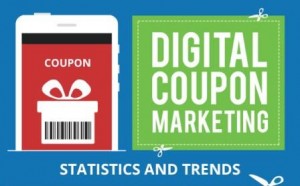
You’ve already heard it: inbound marketing can drive serious web traffic, additional sales and customer loyalty for your growing business. But effectively implementing a content marketing team and strategy isn’t as easy as simply hiring a writer.
Every post your brand publishes is a reflection of your point of view on the world, and customers will choose to identify with you –– or not –– based on that point of view. So while 92% of companies which blog one or more times per day report an increase in customer conversion, there are 31% more bloggers out there than there were just three years ago. This means that while blogging can increase your conversions, the rate at which it can do so depends heavily on how well you can get your content discovered by the target consumer (i.e. the one who will identify with your point of view). After all, more bloggers means more content, which means more competition.
So, what should your company be blogging about? Well, there are a few options. The key is remaining consistent, utilizing analytics to see which posts are proving out the best possible ROI and reiterating on successful content. And, keep in mind: not even content professionals truly know what will work for individual brands.
Over the last few years, publishing and the private sector have merged significantly. There are now branded content offers on almost all publications (content written either in-house at a publication like the New York Times and sponsored for by a brand like Dell, or content written by the brand itself and run on a site like Mashable in order to gain access to their audience). These content offerings are expensive and have been a way for publishers to better monetize. For brands, these content blocks serve brand awareness initiatives well.
But, before you invest in such a placement, it is wise that your brand build up a solid backlog of content which already expresses your world point of view. So, what content does that best? We’ve rounded up a few examples of content types all retailers should be focused on for 2016. These will give you a good launching pad for posting daily or weekly content, as well as help to bolster your SEO, social media following and even serve as landing pages for any content-driven initiatives you run in the future.
Share Your Passion
As an entrepreneur, you might have noticed that your expertise is a highly requested commodity –– especially as your business begins to reach scale. If you’ve long had a content initiative in place, it’s likely you’ve already written about why you started, how you did it and so on. These posts are great fodder to re-purpose, or re-edit, and then re-publish in various new channels. For instance, if you published your content on LinkedIn back in the day, be sure to re-pub it on your blog, on Medium or pitch it out to publications like Entrepreneur or Inc., which regularly accept entrepreneur “How I Did It” pieces.
Don’t worry too much about duplicate content here, but do prioritize channels and edit well. Update your post to account for modern innovations and trends, then pitch it out first to larger publications to see if they bite. After a week or so, go ahead and publish the piece on your company’s blog. If the larger pub wants in after the fact, they can do so under a re-publishing agreement.
Of course, as your business grows, so, too, does your business’s influence. Today, companies with a charitable purpose report higher level of customer satisfaction and loyalty. Think of Toms Shoes or Warby Parker and their giving back philosophies. Your charitable association doesn’t have to be a part of your overall business plan, though. Instead, it can be a riff off of your already well-established passions.
For instance, if you’ve always been an advocate for early coding education in order for increased innovation and industry disruption: host a few Coding for a Cause events, or write about it on your blog. Become an official sponsor, offer your space up for meetings, help to promote events and education around the importance of the project. Over time, your consumer will come to associate the cause and your brand as complementary, opening your business up to increased loyalty by those who identify with that cause as well.
Josie Maran is a great example of a brand pushing forward on the owner’s passion and creating a synonymous association with their business and a cause. Josie Maran cosmetics is branded as “luxury with a conscience,” and the company has teamed up with the IMAGINE movement, a cause aimed at bringing empowerment to girls in developing nations.
Similarly, Toyota has a sustainability campaign which helps the brand connect to concerned consumers. Each year, the brand releases a sustainability report to keep consumers informed on how the business is doing in keeping ahead of global trends on addressing the issue of global warming.

Both of these brands are taking advantage of causes close to both their and their target audience’s heart, and making a difference in the process. Figure out which causes your company could use to do the same –– and then share that content on social to increase brand visibility with your potential new consumer base.
Put a New Twist on Your Products
Writing about your own products can be trickier than it sounds. If you want an engaged audience, you don’t want your blog to be one big ad. Since you already have product pages to explain the features and benefits of each item, you don’t want to repeat that content either.
So, what’s left to write about?
- Tell the story behind your products. How are they made? Where did they come from? What makes them special?
- Announce new or improved products. Give some extra details around the good news. What did you improve? How did you improve it? Why did you add a new product?
- Put your products in context. Your product probably goes great with a variety of other products in multiple settings. So put together the complete package. Simply Southern Wedding does a great job of this, especially with their wedding theme posts.

- Build out your positive reviews. Do you have some glowing testimonials from happy customers? Pick a couple, email or call the customer and see if you can interview them. These posts might seem like humble-bragging, but they can show your product in action while sharing the spotlight with your customers.
- Showcase customer success. If you know people who have achieved a goal thanks to your product, you can cover that too.
The Jeni’s Ice Cream website and blog are both fabulous examples of all of the above methods put to work. Their blog features recipes using their products, along with additional products consumers may already have at home, helping to put their product in a larger context. They will publish “What’s New on the Menu” posts monthly to showcase new or improved products. They also publish neighborhood recaps in which they talk to customers and get their review on their favorite ice flavors as well as insights into what makes their city so great.

From the looks of their blog, Jeni’s publishes about 4 times a month, or once a week –– each time using a different variation of how they are spotlighting their product.
Help Your Reader Out
What can you do to assist or educate your readers? This is really an extension of blogging about your passion, maybe with a bit of product blogging thrown in.
Put yourself in your customers’ shoes and think about what questions you might you type in a search box. Then create content that answers those questions, proactively helping them solve their problem.
A how-to post is a great place to start, especially if you can include video or images. Laptop Replacement Keys does this well, serving up content on exactly how to change out your key once you buy the product.
Recipes or craft posts are great how-to walk-throughs of product as well. Bulk Apothecary focuses much of their blog content on this type of post. They include recipes for candles, scrubs, sprays, soaps and decor in which they highlight which of their product would work best and then exactly how to create the item yourself.

Go Behind the Scenes of Your Business
Consumers trust and care about SMBs –– and though you are a growing retailer, your business likely doesn’t yet silo into corporation-sizes. A recent Muttart Foundation survey found that 83% of Canadians trust small businesses, compared to just 40% trusting corporations. And, according to research from American Express, 93% of consumers believe it’s important to support small businesses.
Tap into these sentiments by showing the human side of your business. Your blog is a great place to post pictures of your work room, do a tour of your brick-and-mortar shop or introduce your dedicated employees. You get to build confidence in your product and store while creating content that is completely unique to your business.
Online store Son of a Sailor does this particularly well, using their small studio/retail space as well as the pop-up shops they run to post event-driven content which shows the behind-the-scenes workings of being a retailer on the rise.

Curate Your Space
Yes, you can create an entire blog post made up of other people’s blogs and blog posts. This isn’t plagiarism as long as you are collecting, writing your own short, original copy to promote and then linking to it.
The fancy, writerly word for this trick is “content curation.” Examples of curated posts would be a weekly roundup of industry news, the top five blogs in your space and a collection of the best tips related to your product.
Curation is great for bloggers on both sides of the coin. As the curator, you can turn out a quick post, but more importantly you get the opportunity to connect and network with other people in your space. Be sure to reach out to those included in your roundup to let them know you included them, and why.
The writers you are curating get link love and exposure for their work, which improves their SEO and content discoverability. Ideally you’ll both get extra mileage by sharing the curated post and mentioning one another on social media.
Whether you are curating full blogs, blog posts or even social posts, always make sure you link and give credit to the original poster. These types of posts are good to run once a week or once a month, depending on how often you blog. It is a quick win strategy, but shouldn’t be the only content tool in your box.
Do you already have blog? Got any tips or tricks for retailers? We’d love to hear about! Leave a comment and we just might feature you in our next post.
Digital & Social Articles on Business 2 Community(110)









